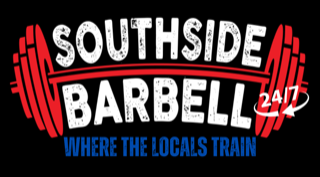🏋️♂️ How to Do Squats Correctly: Master the Basics at Southside Barbell in Lakeland, FL
If you’re training for strength, athletic performance, or better mobility, squats are non-negotiable. But doing them the wrong way? That’s a fast track to poor results—or worse, injury. At Southside Barbell in Lakeland, Florida, we coach lifters of all experience levels on how to squat properly and confidently.
Whether you’re just starting out or returning to training after time off, this guide will help you master your squat form from the ground up.
Step-by-Step: How to Perform a Proper Squat
1. Assume the Correct Squat Stance
Stand with your feet about shoulder-width apart and your toes slightly pointed outward. Your knees should track in line with your toes throughout the movement. This neutral stance allows for maximum depth and joint safety.
2. Screw Your Feet Into the Floor
This cue helps you create external rotation in your hips for better glute engagement and knee alignment. To do it, push your feet into the ground as if twisting them outward (without actually moving them). You’ll feel your hips and core activate instantly.
3. Keep Your Chin Up and Spine Neutral
Fix your gaze straight ahead—not at the ceiling or the floor. This keeps your neck in line with your spine and prevents you from rounding or overextending your back. Keep your chest proud and your upper back tight throughout the lift.
4. Initiate the Movement with Your Hips
Start the descent by pushing your hips back, then bend your knees. This movement should feel like sitting back into a chair—not just dropping straight down. Keep your core braced and your torso upright.
5. Pause at Parallel
Lower yourself until your thighs are at least parallel to the floor. If mobility allows, going slightly below parallel is even better. Pause briefly to maintain control and tension. Don’t let your knees collapse inward or your back round at the bottom.
6. Drive Through Your Heels
To rise out of the squat, push through your heels and engage your glutes and hamstrings. Avoid shifting weight to the balls of your feet. Driving through the heels prevents knee strain and encourages proper posterior chain activation.
7. Finish Strong
Stand tall at the top. Squeeze your glutes, reset your posture, and prepare for the next rep. Don’t hyperextend your lower back or lean backward—just stand up straight and solid.
Common Squat Mistakes (and How to Fix Them)
1. Knees Caving In (Valgus Collapse)
➤ Fix: Strengthen your glutes and abductors. Use the “screw your feet into the floor” cue to create torque and open your knees outward.
2. Lifting the Heels
➤ Fix: Improve ankle mobility and keep your weight centered over your midfoot and heel. Squat shoes or heel wedges can help temporarily.
3. Looking Up or Down
➤ Fix: Keep your gaze fixed on a spot directly in front of you. Looking up can overextend your neck, while looking down rounds your upper back.
4. Rounding the Lower Back (Butt Wink)
➤ Fix: Improve core strength and hip mobility. Only squat as deep as you can without losing spinal neutrality.
5. Not Hitting Depth
➤ Fix: Work on flexibility in the hips, knees, and ankles. Reduce weight if necessary and squat to at least parallel to engage the correct muscle groups.
6. Leaning Too Far Forward
➤ Fix: Strengthen your posterior chain and improve your bracing technique. Practice with goblet squats or safety bar squats to reinforce good positioning.
Different Squat Variations You Can Try
At Southside Barbell, we don’t just teach the back squat—we help you explore variations to target different muscle groups or meet specific goals:
- Goblet Squats (great for beginners, dumbbell held at chest)
- Front Squats (barbell across front shoulders—core killer!)
- Box Squats (focus on control and hip drive)
- Safety Bar Squats (easier on shoulders and wrists)
- Zercher Squats (held in the elbows—great for upper back strength)
All of these squat variations are supported with the right equipment at our Lakeland gym.
Why Your Squat Form Matters
Proper squat technique isn’t just about looking good in the mirror or lifting more weight—it’s about:
- Preventing injury
- Training the correct muscles
- Improving sports performance
- Building long-term strength
Form breakdown over time leads to joint stress, muscle imbalances, and plateaus. That’s why our team at Southside Barbell is always available to give feedback, adjust your technique, and help you reach your next level.
FAQ: Squatting at Southside Barbell
Q: Should my knees go past my toes when I squat?
A: It’s okay if your knees move slightly past your toes—as long as your heels stay planted and your torso remains upright. The “no knees past toes” myth has been debunked for most lifters.
Q: Is it bad to squat deep?
A: Not at all! Deep squats (below parallel) activate more glutes and hamstrings. Just make sure you maintain good form and don’t sacrifice posture for depth.
Q: How do I know if I’m squatting with proper form?
A: Record yourself from the side, or better yet—ask one of our coaches at Southside to give you real-time feedback.
Q: Can I squat if I have knee pain?
A: Possibly—with modifications. You may need to adjust your stance or work on mobility. We can help you find a squat pattern that’s pain-free and productive.
Q: What’s the best squat for beginners?
A: Goblet squats are ideal for learning good form, posture, and depth. From there, you can progress to barbell squats or other variations.
Perfect Your Squat at Southside Barbell in Lakeland
You don’t need to be a pro to squat correctly—but it helps to have the right gym and the right coaching behind you. At Southside Barbell, we’ve created a no-fluff environment where lifters of all levels can train seriously and safely.
From expert feedback to specialty bars, racks, plates, and platforms, we’ve got everything you need to perfect your squat.

